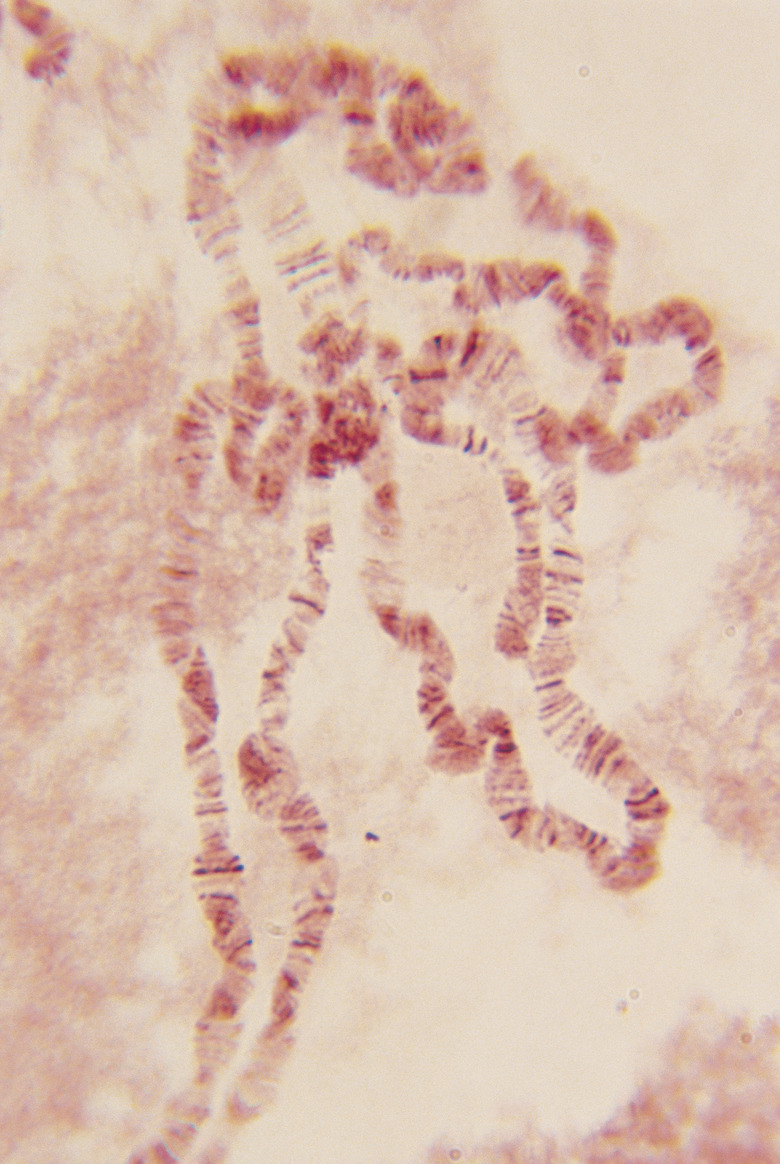What Is Pure Trait And A Hybrid Trait?
A diploid organism has paired chromosomes, each with a similar arrangement of genetic loci. Variations of these genes are called alleles. If an organism has one of the same type of allele on each of its chromosomes, that organism has a pure trait. If an organism has two different types of alleles on its chromosomes, that organism has a hybrid trait.
Dominant and Recessive Alleles
Dominant and Recessive Alleles
Alleles can be dominant or recessive. A dominant allele, in combination with either another dominant allele or a recessive allele, will manifest itself outwardly in the organism. A recessive allele will only manifest itself outwardly if it is paired with another recessive allele. For example, if the allele for white eye color is recessive, an organism will only have white eyes if it has two recessive alleles. This outward manifestation of a trait is known as a phenotype. The actual genetic configuration of alleles is known as a genotype.
Homozygous and Heterozygous
Homozygous and Heterozygous
A pure trait is also known as a homozygous trait. Homozygous traits are either a combination of the same two dominant alleles or the same two recessive alleles. A hybrid trait is also known as a heterozygous trait, and is the pairing of a dominant and recessive allele. The dominant allele always dictates the phenotype of the trait. Therefore, an organism that is heterozygous for a trait will have the same outward manifestation of that trait as an organism that has a dominant homozygous trait.
Inheritance
Inheritance
When diploid organisms reproduce, they pair one of their alleles with one of their mate's alleles. Therefore, an organism that has a pure trait will contribute the same allele in either of its single-chromosome manifestations. An organism with a hybrid trait may contribute either a dominant or recessive allele. In this way, an organism's offspring can be phenotypically different from its parents. For example, if both parents have a particular hybrid trait, the offspring can have a homozygous pairing of recessive alleles in that trait.
Punnett Squares
Punnett Squares
In order to visualize the probabilities of pure or hybrid offspring, you can draw a diagram called a Punnett square. A Punnett square is a block of squares with one parent's alleles along the top of the diagram and another parent's alleles along the left of the diagram. Represent a dominant allele with a capital letter and a recessive allele with a lowercase letter. In each square, write the combination of that specific row and column of alleles. For example, a Punnett square of a cross of two Pp organisms would yield PP in the top left square, Pp in the top right square, Pp in the bottom left square and pp in the bottom right square. This particular cross could yield both pure and hybrid offspring.
Cite This Article
MLA
Murmson, Serm. "What Is Pure Trait And A Hybrid Trait?" sciencing.com, https://www.sciencing.com/pure-trait-hybrid-trait-23487/. 24 April 2017.
APA
Murmson, Serm. (2017, April 24). What Is Pure Trait And A Hybrid Trait?. sciencing.com. Retrieved from https://www.sciencing.com/pure-trait-hybrid-trait-23487/
Chicago
Murmson, Serm. What Is Pure Trait And A Hybrid Trait? last modified March 24, 2022. https://www.sciencing.com/pure-trait-hybrid-trait-23487/
